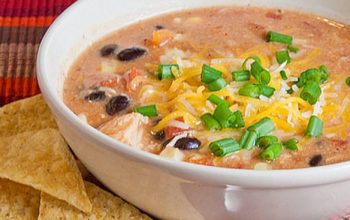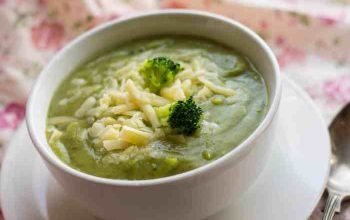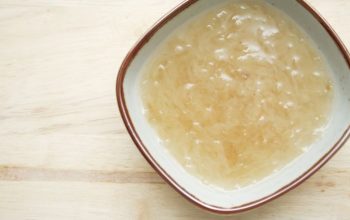Brisket Soup: A Deep Dive into This American Comfort Food
Brisket soup recipe – Brisket soup, a hearty and flavorful concoction, transcends its simple ingredients to become a symbol of American culinary creativity and resourcefulness. Its roots are deeply intertwined with the history of barbecue and Southern cooking, evolving over time to reflect regional preferences and available resources. Think of it as the ultimate comfort food, a bowl of warm, rich goodness that’s perfect for a chilly evening or a celebratory gathering.
This guide will take you on a journey from understanding the basics of brisket soup to mastering the art of creating your own delicious variations.
Introduction to Brisket Soup
Brisket soup’s history is as rich and layered as the soup itself. While precise origins are difficult to pinpoint, its popularity surged alongside the rise of barbecue in the American South. Brisket, a tough cut of beef, became a staple due to its affordability and ability to become incredibly tender when slow-cooked. This led to various regional interpretations, each showcasing unique flavor profiles and ingredient combinations.
Texas-style brisket soup, for instance, often features a bolder, spicier broth, while other regional versions might incorporate different vegetables or herbs. Nutritionally, brisket soup offers a good source of protein, iron, and various vitamins and minerals, depending on the included vegetables.
So you’re craving a brisket soup recipe? A hearty, fall-apart-tender brisket is the dream, right? But if you’re feeling adventurous, consider a richer broth – check out this best recipe for oxtail soup for inspiration. The oxtail’s depth of flavor might just kick your brisket soup game up a notch! Then, you can return to your brisket soup recipe, armed with new ideas for broth-based deliciousness.
Essential Ingredients for Brisket Soup
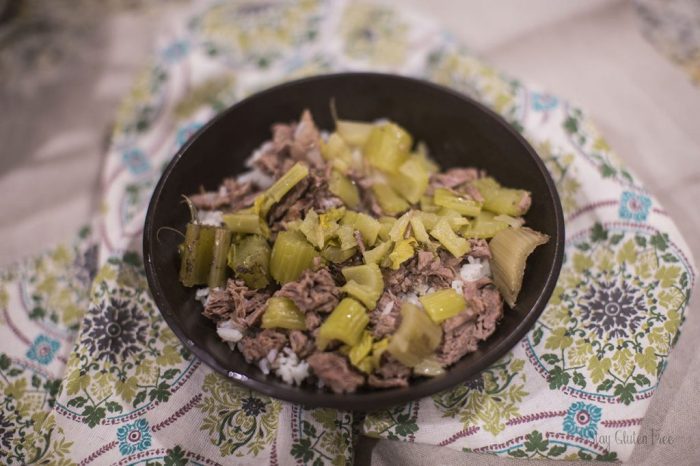
Source: stayglutenfree.com
The core ingredients for a classic brisket soup recipe are surprisingly straightforward. The foundation rests on a flavorful broth, tender brisket, and a medley of vegetables. Each component plays a crucial role in building the overall taste and texture. While substitutions are possible, understanding the role of each ingredient is key to creating a truly exceptional bowl of soup.
| Ingredient | Role | Suitable Substitutions | Notes |
|---|---|---|---|
| Brisket | Provides rich, savory flavor and tender meat. | Chuck roast, short ribs | Choose a brisket with good marbling for optimal flavor and tenderness. |
| Beef Broth | Forms the base of the soup, providing flavor and moisture. | Chicken broth (for a lighter flavor), vegetable broth (for a vegetarian option) | Homemade broth is ideal, but store-bought is a convenient alternative. |
| Onions, Carrots, Celery | Classic mirepoix, adding sweetness and depth to the broth. | Leeks, parsnips, turnips | Use a combination of these vegetables for a well-rounded flavor. |
| Garlic | Adds pungent aroma and flavor. | Shallots, chives | Use fresh garlic for the best flavor. |
| Brisket Type | Suitability for Soup |
|---|---|
| Flat Brisket | Good for leaner soup, requires longer cooking time. |
| Point Brisket | More flavorful and fattier, results in richer soup, cooks faster. |
| Whole Brisket | Provides both lean and fatty parts, offering a balance of flavors and textures. |
Preparing the Brisket, Brisket soup recipe
Proper brisket preparation is essential for achieving a tender and flavorful soup. Trimming excess fat is important, as excessive fat can render the broth greasy. Searing the brisket before adding it to the soup enhances its flavor and creates a beautiful crust. While pan-searing is a quick and easy method, oven roasting allows for more even browning and deeper flavor development.
Both methods offer unique advantages; pan-searing delivers a quick, flavorful crust, while oven roasting imparts a more even and deeper browning.
Building the Brisket Soup Broth
A flavorful broth is the cornerstone of any great brisket soup. Using high-quality beef stock or broth is crucial for creating a rich and savory foundation. Aromatic vegetables like onions, carrots, and celery, along with garlic, are essential for building depth of flavor. The combination of these ingredients creates a complex and satisfying base for the soup. Slow simmering allows the flavors to meld and intensify, resulting in a deeply satisfying broth.
| Broth Option | Flavor Profile |
|---|---|
| Homemade Beef Broth | Rich, savory, and complex, with deep beefy notes. |
| Store-Bought Beef Broth | Convenient, generally savory, but may lack the depth of homemade broth. |
| Chicken Broth | Lighter and less intense than beef broth, good for a milder soup. |
Adding Vegetables and Seasoning
The vegetables added to brisket soup not only contribute visual appeal but also enhance the flavor and nutritional value. Common additions include potatoes, carrots, celery, and onions, often pre-cooked to ensure they are tender when the soup is finished. Seasoning is key to balancing the flavors. Salt and pepper are essential, while herbs like bay leaf, thyme, and rosemary add aromatic complexity.
Experimenting with different spices like smoked paprika or chili powder can create unique flavor profiles.
- Potatoes (diced)
- Carrots (sliced or diced)
- Celery (chopped)
- Onions (chopped)
- Green beans
- Corn
- Parsnips
Simmering and Cooking the Soup
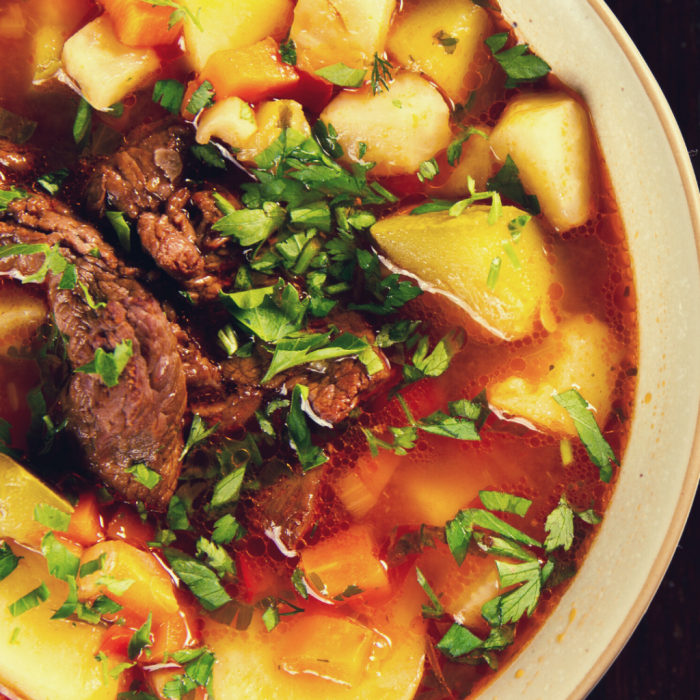
Source: dailyharvestexpress.com
Low and slow cooking is essential for achieving tender brisket. Simmering the soup gently over low heat allows the collagen in the brisket to break down, resulting in incredibly tender meat that practically melts in your mouth. Cooking time varies depending on the cut of brisket and the desired tenderness, ranging from several hours to even overnight. Checking the brisket’s doneness can be done by inserting a fork; it should easily pierce the meat without resistance.
Serving and Garnishing Brisket Soup
A steaming bowl of brisket soup is a feast for the senses. Serving it with crusty bread, crackers, or cornbread enhances the dining experience. Garnishes add the final touch of visual appeal and flavor. Fresh herbs like parsley or chives provide a pop of color and freshness, while a dollop of sour cream or a sprinkle of shredded cheese adds creaminess and richness.
Imagine a rustic bowl, filled with tender brisket swimming in a rich, dark broth, studded with colorful vegetables. A sprinkle of fresh parsley adds a vibrant green contrast, while a swirl of sour cream adds a touch of creamy indulgence.
Variations and Adaptations of Brisket Soup Recipes
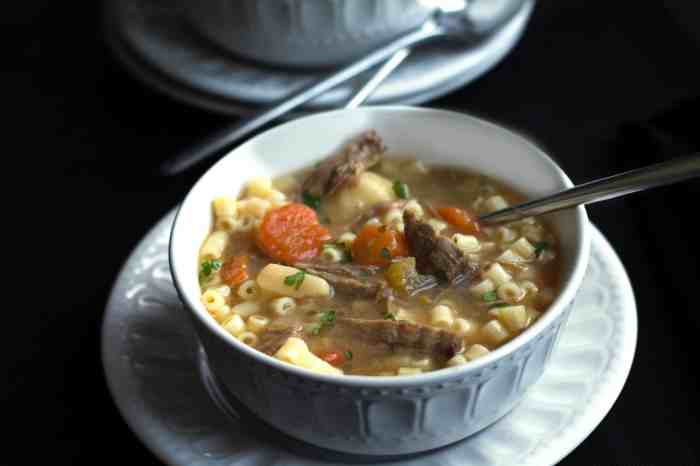
Source: errenskitchen.com
The beauty of brisket soup lies in its adaptability. Spicy variations can be achieved by adding chili powder, cayenne pepper, or a dash of hot sauce. Vegetarian adaptations can substitute the brisket with hearty vegetables like mushrooms or lentils, using vegetable broth as the base. Regional variations often involve unique combinations of vegetables and spices, reflecting the culinary traditions of different areas.
Thickening the soup can be achieved by adding a cornstarch slurry or pureed vegetables.
Detailed FAQs: Brisket Soup Recipe
Can I use a different cut of beef instead of brisket?
While brisket is ideal for its rich flavor and tenderness after slow cooking, you can substitute with chuck roast, short ribs, or even a beef shank. Cooking times may need adjustment.
How long can I store leftover brisket soup?
Store leftover brisket soup in an airtight container in the refrigerator for up to 3-4 days. It can also be frozen for up to 3 months.
Can I make this soup in a slow cooker or Instant Pot?
Absolutely! Both slow cookers and Instant Pots are excellent for preparing brisket soup. Adjust cooking times according to your appliance’s instructions.
What kind of vegetables are best for this soup?
Root vegetables like carrots, potatoes, and turnips are classic choices. You can also add celery, onions, parsnips, or even greens like kale or spinach.

